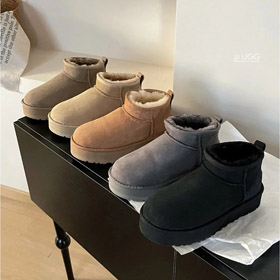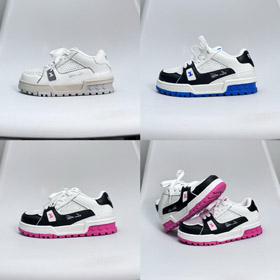Home >
The Timeless Legacy of Chanel: A Story of Elegance and Innovation
The Timeless Legacy of Chanel: A Story of Elegance and Innovation
2025-04-26
In the annals of fashion history, few brands have left an indelible mark quite like Chanel. Founded by the visionary Coco Chanel in 1910, the house has evolved from a small Parisian millinery shop into a global symbol of sophistication, redefining women’s fashion and challenging societal norms at every turn. Its journey is a testament to the power of creativity, resilience, and a relentless pursuit of timeless elegance.
The Visionary Behind the Brand
Gabrielle “Coco” Chanel was born into humble beginnings in 1883, but her destiny was far from ordinary. Raised in an orphanage after her mother’s death, she learned sewing—a skill that would later become the foundation of her empire. Early in life, she worked as a cabaret singer, where the nickname “Coco” stuck, and it was during this period that she began designing hats for herself and friends. Her innate sense of style caught the attention of wealthy patrons, including Arthur “Boy” Capel, whose financial support allowed her to open her first shop on Rue Cambon in Paris in 1910.
Coco Chanel’s revolutionary philosophy was simple yet radical: “Fashion fades, only style remains.” She rejected the corseted, overly ornate designs of the early 20th century, instead drawing inspiration from menswear to create clean, functional pieces for women. Her debut collection of loose-fitting blouses, tailored jackets, and comfortable skirts introduced a new era of effortless chic, empowering women to embrace comfort without sacrificing elegance.
Iconic Contributions to Fashion
One of Chanel’s most enduring innovations is the Little Black Dress (LBD). In 1926, she introduced a simple, sleek black dress in Vogue, declaring it a “universal uniform for women.” This design shattered the notion that black was only for mourning, transforming it into a symbol of sophistication and modernity. The LBD remains a staple in wardrobes worldwide, a testament to Chanel’s ability to create timeless classics.
Another cornerstone of the brand is the Chanel Suit. Crafted from luxurious tweed, the suit featured a boxy jacket with gold buttons and a knee-length skirt, offering a refined yet practical alternative to the restrictive fashions of the time. It became a signature look for women in the workplace and beyond, embodying confidence and poise. The suit’s enduring popularity is evident in its modern iterations, still beloved by fashion enthusiasts today.
In 1921, Chanel revolutionized the perfume industry with N°5, the first fragrance to bear a designer’s name. Created in collaboration with perfumer Ernest Beaux, N°5 was a bold blend of jasmine and rose, housed in a minimalist glass bottle. Coco Chanel famously declared, “A woman who doesn’t wear perfume has no future,” and N°5 became an instant icon, remaining one of the best-selling perfumes in history.
The House of Chanel Today
After Coco Chanel’s death in 1971, the brand faced a period of transition but was revitalized in 1983 by Karl Lagerfeld, who became creative director. Lagerfeld respected the brand’s heritage while infusing it with contemporary flair, introducing iconic designs like the quilted Classic Flap Bag with its interlocking CC logo and chain strap—a modern reinterpretation of Coco’s original 1929 shoulder bag. Under Lagerfeld’s stewardship, Chanel remained at the forefront of fashion, blending tradition with innovation in runway shows that became legendary spectacles.
Today, under the leadership of Virginie Viard, who succeeded Lagerfeld in 2019, the brand continues to honor its legacy while embracing new directions. Viard’s designs stay true to Chanel’s core values of simplicity and luxury, featuring delicate tweeds, soft silhouettes, and subtle glamour. The brand’s commitment to craftsmanship is evident in its Haute Couture collections, where artisans handcraft each piece with meticulous attention to detail, ensuring that every garment is a work of art.
A Cultural Phenomenon
Chanel’s influence extends far beyond fashion. Its timeless designs have been celebrated in film, literature, and popular culture, worn by icons like Audrey Hepburn, Marilyn Monroe, and Kristen Stewart. The brand’s commitment to empowering women is reflected in its campaigns, which often feature strong, independent figures, reinforcing its message of self-expression and confidence.
For those inspired by Chanel’s legacy and seeking high-quality, stylish pieces, platforms like ACbuy Spreadsheet offer a curated selection of fashion items that echo the brand’s ethos of elegance and affordability. While not affiliated with Chanel, such platforms celebrate the spirit of accessible style, much like Coco Chanel herself did over a century ago.
Conclusion
The story of Chanel is a celebration of innovation, resilience, and the enduring power of style. From Coco Chanel’s humble beginnings to its status as a global luxury empire, the brand has consistently challenged conventions and redefined what it means to be fashionable. Whether through the iconic N°5 perfume, the timeless Little Black Dress, or the elegant tweed suit, Chanel continues to inspire generations, proving that true style is never bound by time. As we look to the future, the house of Chanel remains a beacon of sophistication, a reminder that elegance is a language understood by all.



















